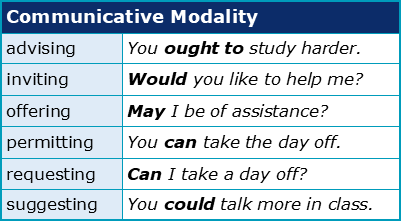What are the five functions of English verbs?

This is the first of five chapters About Verbs. To complete this reader, read each chapter carefully and then unlock and complete our materials to check your understanding.
– Introduce the concept of word classes and verbs
– Provide five ways in which verbs are useful in English
– Include examples of each of the five functions to guide the reader
Before you begin reading...
-
video and audio texts
-
knowledge checks and quizzes
-
skills practices, tasks and assignments
Chapter 1
As a language learner, you’re probably already quite familiar with the concept of classifying words into different groupings based on their form and function, such as which words are adjectives and which are nouns or adverbs. Knowing these word classes intimately allows a learner to have command of which suffixes, prefixes, syntactic structures and grammar are necessary to form accurate sentences in English. When writing academically, it’s particularly important that students are able to quickly recognise each class, understand and remember the various related rules, and correctly apply this knowledge to a wide range of vocabulary and phrases.
This short five-chapter reader on verbs is therefore intended to explore this word class in particular detail, focussing specifically on how verbs can be most usefully applied to both general and academic contexts. Chapter 1 first introduces the defining features of verbs before offering some discussion as to their five functions. Chapter 2 then provides five tests for effectively identifying verbs, with Chapters 3 and 4 later exploring and exemplifying the thirteen different types of verb as well as the seven most important rules surrounding their distribution and form. Finally, Chapter 5 provides a short list of the 150 verbs and 15 verb-based expressions that are perhaps most useful when using academic English.
What is a verb?
Of the eight word classes commonly recognised in the English language, verbs are perhaps one of the most important. By knowing only nouns and verbs (and perhaps a few gestures), a novice of the language can probably converse to at least some degree with a native speaker. This is because verbs are the keystones of clauses and sentences and it would be almost impossible to communicate a complete or grammatical expression without them. The following expressions exemplify this:
In example (a), the word ‘hate’ is an integral part of the meaning of the sentence. This verb clearly communicates the negative relationship between the subject ‘Jane’ and the object ‘mushrooms’, informing the listener or reader that Jane most certainly detests this type of food. Likewise, in example (b), the verb phrase ‘loves studying’ informs us of the positive relationship between the subject ‘Simon’ and the object ‘English’. However, notice in the following examples how a simple change of verb or verb phrase completely alters the meaning of a proposition or expression:
Without changing these subjects or objects at all, the new verb phrases ‘loves picking’ and ‘enjoys teaching’ have changed their relationships entirely.
As these examples demonstrate, verbs can be generally described as being a word class (1) that forms the main part of a clause or sentence, and (2) that describes an action, occurrence or state of being. While accurate enough, this description is perhaps too simplistic to be useful for a language learner who may need to identify words in context and correctly predict form and grammar. Instead, and to most precisely identify this word class, it’s important that students are able to both understand and recognise the many functions of verbs (Chapter 1) as well as know which morphological and syntactic tests can be applied (Chapter 2).
How are verbs useful in English?
Students should remember that there’s always variation in the form and function of word classes among the world’s languages. Particularly regarding verb form, processes of inflectional affixation may be more or less used by a language to demonstrate grammatical concepts which are dependent upon the verb’s interactions with its surrounding words – such as tense, gender, mood, voice or case. While such variation is of course important from a linguistic perspective, for students of academic English, the most vital aspect is how this word class functions in the English language specifically. The remainder of Chapter 1 is therefore intended to explore the five most common functions of verbs in the English language.
Function 1: Verbs communicate action
More precisely, verbs in the English language are used to communicate either actions (‘read’ or ‘study’), occurrences (‘become’ or ‘happen’) or states of being (‘be’ or ‘feel’). This first and most important of verbal functions is what allows this word class to carry and communicate the core meaning of a clause or sentences.
Function 2: Verbs make clauses
Any student that already has a good understanding of sentence structures should know that a sentence may be formed of one independent clause or a combination of many dependent and independent clauses. Because an independent clause generally requires both a subject and a predicate, and because verbs and verb phrases are the key elements of predicates, this word class clearly functions to create the very basis of human language. Whether simply involving a subject, a subject and an object or a subject and a complement, verbs are at the very heart of almost all clauses and sentences:



Function 3: Verbs provide tense and aspect
The third way in which verbs are useful in the English language is that they may be used to modify an expression’s tense (time) or aspect (duration of time). By either conjugating a verb through inflectional affixation or adding auxiliary verbs to its verb phrase, a speaker is able to quickly and consistently change the temporal meaning of an expression. Although examples showing tense and aspect are provided below, more explanation of these concepts will be provided in Chapters 2/4:

Function 4: Verbs demonstrate modality
Although only possible with certain auxiliary verbs, another important function of this word class is that verbs are able to communicate aspects of mood and modality. Modality is a linguistic feature that communicates a speaker’s attitudes about the world around them, either through judgements, assessments or interpretations of the believability, reality, obligation or desirability of a proposition. As can be seen in the following tables, there are twelve types of attitudinal/communicative modality that may be expressed with verbs in English:


These twelve abilities, which may express advice, disapproval, permission or possibility, clearly make verbs a very useful word class in the English language.
Function 5: Verbs show agreement
The final useful function of verbs is that they may be modified to demonstrate agreement – which is when a word changes its form because of the other words in the sentence it relates to. Another type of inflectional affixation, agreement in the English language is limited to grammatical person and number between subjects and verbs. What this means is (and as is shown below), English verbs are able to change form to demonstrate whether the subject is first-, second- or third-person, and whether that subject is singular or plural:

Combine these five functions together and it’s easy to see how useful verbs are for the native or non-native speaker. However, it’s not enough to simply recognise these functions if you wish to be accurate with your verb identification every time. Chapter 2 next provides five tests that can be used to successfully identify this word class.
Downloadbles
Once you’ve completed all five chapters about verbs, you might also wish to download our beginner, intermediate and advanced worksheets to test your progress or print for your students. These professional PDF worksheets can be easily accessed for only a few Academic Marks.
Collect Academic Marks
-
100 Marks for joining
-
25 Marks for daily e-learning
-
100-200 for feedback/testimonials
-
100-500 for referring your colleages/friends